Premium Only Content
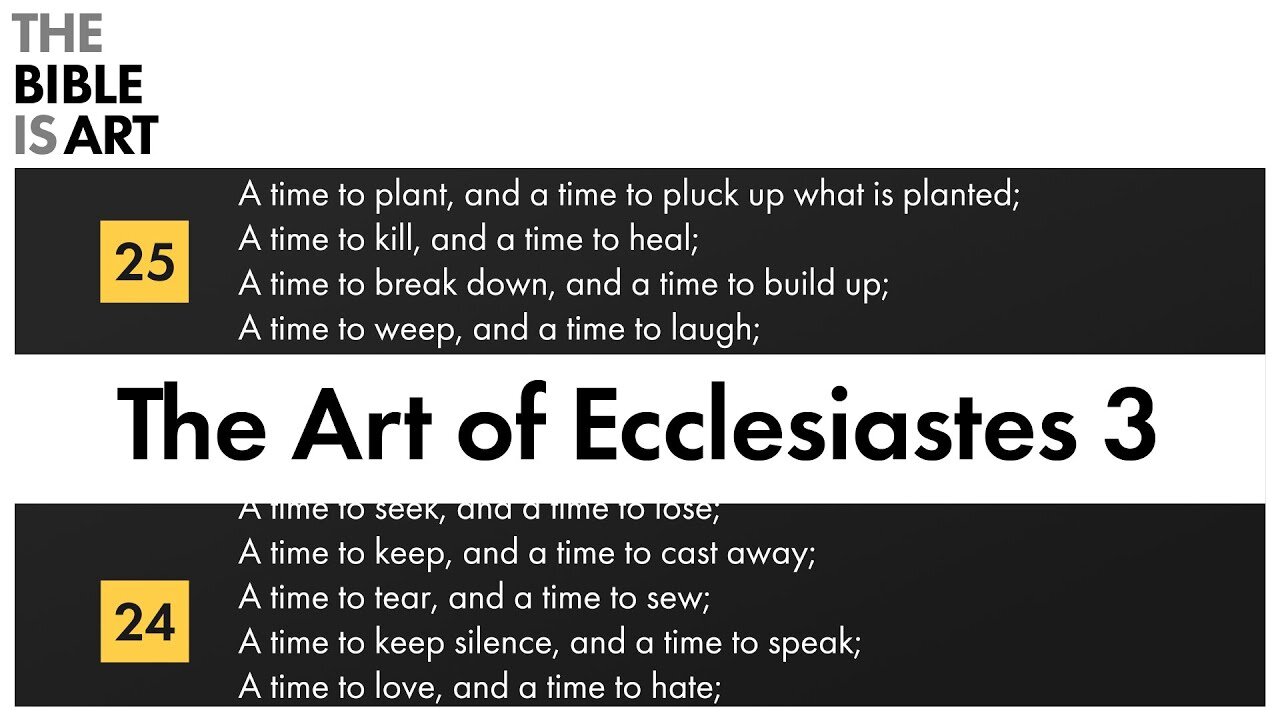
Ecclesiastes 3 Explained
In this video we explain the literary art of Ecclesiastes 3.
Support the Channel: https://www.patreon.com/thebibleisart
Website: https://www.thebibleisart.com
Email: thisdivineart@gmail.com
Twitter: @johnbhiggins
| How to Learn to Read the Bible as Literary Art |
Reading Biblical Narrative: An Introductory Guide (https://amzn.to/30LzaRa)
Narrative Art in the Bible (https://amzn.to/30RVGIb)
The Art of Biblical Narrative (https://amzn.to/3aDrIfk)
Old Testament Narrative: A Guide to Interpretation (https://amzn.to/38rcE2C)
The Poetics of Biblical Narrative (https://amzn.to/2Gh4cqE)
| Literary Structure |
Literary Structure of the Old Testament (https://amzn.to/30Jdm8X)
Style And Structure In Biblical Hebrew Narrative (https://amzn.to/2RDTTlQ)
| Genesis |
Creation: The Story of Beginnings - Grossman (https://amzn.to/2GlPwq9)
Abram to Abraham: A Literary Analysis of the Abraham Narrative - Grossman (https://amzn.to/2v7id7Z)
Narrative Art in Genesis - Fokkelman (https://amzn.to/2ulmd4t)
A Commentary on the Book of Genesis (Part I) - Cassuto (https://amzn.to/2NOAhdt)
A Commentary on the Book of Genesis (Part II) - Cassuto (https://amzn.to/2Gcuk6d)
Genesis: A Commentary - Waltke (https://amzn.to/2vaBvt7)
The Gospel of Genesis: Studies in Protology and Eschatology - Gage (https://amzn.to/2RGjRFo)
Abraham and All the Families of the Earth: A Commentary on the Book of Genesis 12-50 - Janzen (https://amzn.to/2TVyCqJ)
Genesis 1-15, Volume 1 - Wenham (https://amzn.to/2TQnYRO)
Genesis 16-50, Volume 2 - Wenham (https://amzn.to/3aDY21J)
| Transcription |
Welcome back to the Bible is Art where we explore the literary artistry of the Bible and this week we’re going to explore that great poem in Ecclesiastes 3 about Time.
a time to be born, and a time to die;
a time to plant, and a time to pluck up what is planted;
a time to kill, and a time to heal;
a time to break down, and a time to build up;
a time to weep, and a time to laugh;
a time to mourn, and a time to dance;
a time to cast away stones, and a time to gather stones together;
a time to embrace, and a time to refrain from embracing;
a time to seek, and a time to lose;
a time to keep, and a time to cast away;
a time to tear, and a time to sew;
a time to keep silence, and a time to speak;
a time to love, and a time to hate;
a time for war, and a time for peace.
Whenever you have a text this famous and repetitive, in order to understand the depth of the art of the author, you have to pay precise attention to the particularities. What words and phrases and in what order. What words does he choose not to use. What repetitions or omissions, patterns, and breaks in pattern. We need to do this because our familiarity can conceal subtly.
So let’s look at some particularities and then put those together to discover our author’s art.
First, there are all sorts of things that are perfect in this poem. There are 7 poetic couplets, totaling 14 lines (2x7). The keyword, time, is used 28 times (7x4). A similar technique, that is using seven to connote perfection, is used in Genesis 1 and I made a video about that I’ve linked in the description.
There is also perfect comprehensiveness. You begin with the extremes of an individual, birth and death, and end with the extremes of a nation, war and peace. And inside this frame you have the whole range of human experience. All of life is in its proper place, good and bad, or is it?
And I say this because of the second set of particularities. That is, there are things that are not perfect, that are off, that are confusing and ambiguous.
For instance in a poem that’s clearly been composed with a thought to Numerical perfection, having variations of the perfect number 7, it’s strange that in total the poem contains 60 words, that is, not perfect number. Furthermore, the whole poem is organized around the central two lines and it’s almost perfectly balanced, almost. There are 25 words before the central couplet and 24 words after. And although most of the couplets are perfectly balanced couplets with 4 words in each line the central couplet has 6 and 5 words. So there’s things that are slightly off.
Now, we know it’s organized around the central two lines not only for the balance of words before and after but also because the main word in each of the lines is repeated only here. Notice, you have a repetition of stones and embracing:
a time to cast away stones, and a time to gather stones together;
a time to embrace, and a time to refrain from embracing;
Also you have a unique feature here in that the line about stones is the only line with an object. All of the other lines have a time for and then some verb, a time to die or a time to laugh, but here you have a verb with an object, to cast away stones, to gather stones.
-
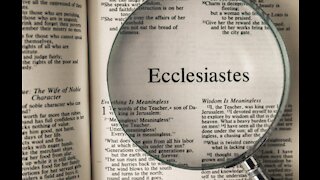 5:17
5:17
The Skeptical Partisan
3 years agoEcclesiastes 9
14 -
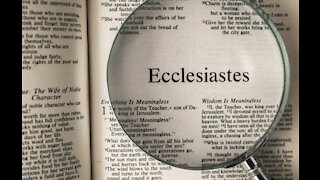 4:36
4:36
The Skeptical Partisan
3 years agoEcclesiastes 8
15 -
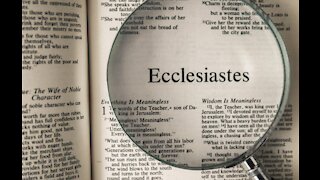 4:50
4:50
The Skeptical Partisan
3 years agoEcclesiastes 5
10 -
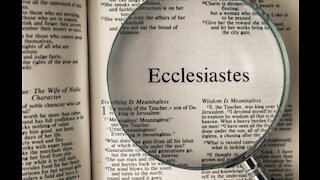 2:47
2:47
The Skeptical Partisan
3 years agoEcclesiastes 6
31 -
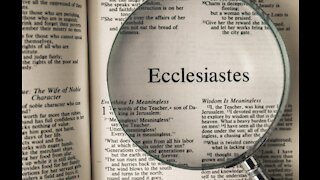 6:51
6:51
The Skeptical Partisan
3 years agoEcclesiastes 2
312 -
 4:36
4:36
The Skeptical Partisan
3 years agoEcclesiastes 3
19 -
 20:19
20:19
Dr Lamba's Awakening Call
3 years ago $0.03 earnedKriya Yoga Explained
231 -
 23:46
23:46
Medicare Supplement Plans - Medigap Insurance
3 years ago $0.05 earnedMedicare Explained
6576 -
 2:16:49
2:16:49
TheSaltyCracker
13 hours agoMusk Destroys Gov't Money Pot ReeEEeE Stream 02-05-25
173K286 -
 1:10:59
1:10:59
FreshandFit
13 hours agoTop 3 Ways To Overcome A Break Up
141K16